Here's every robot vacuum I saw at IFA 2023, and why I wouldn't buy any of them
That don’t impress me much, uh uh uh-huh
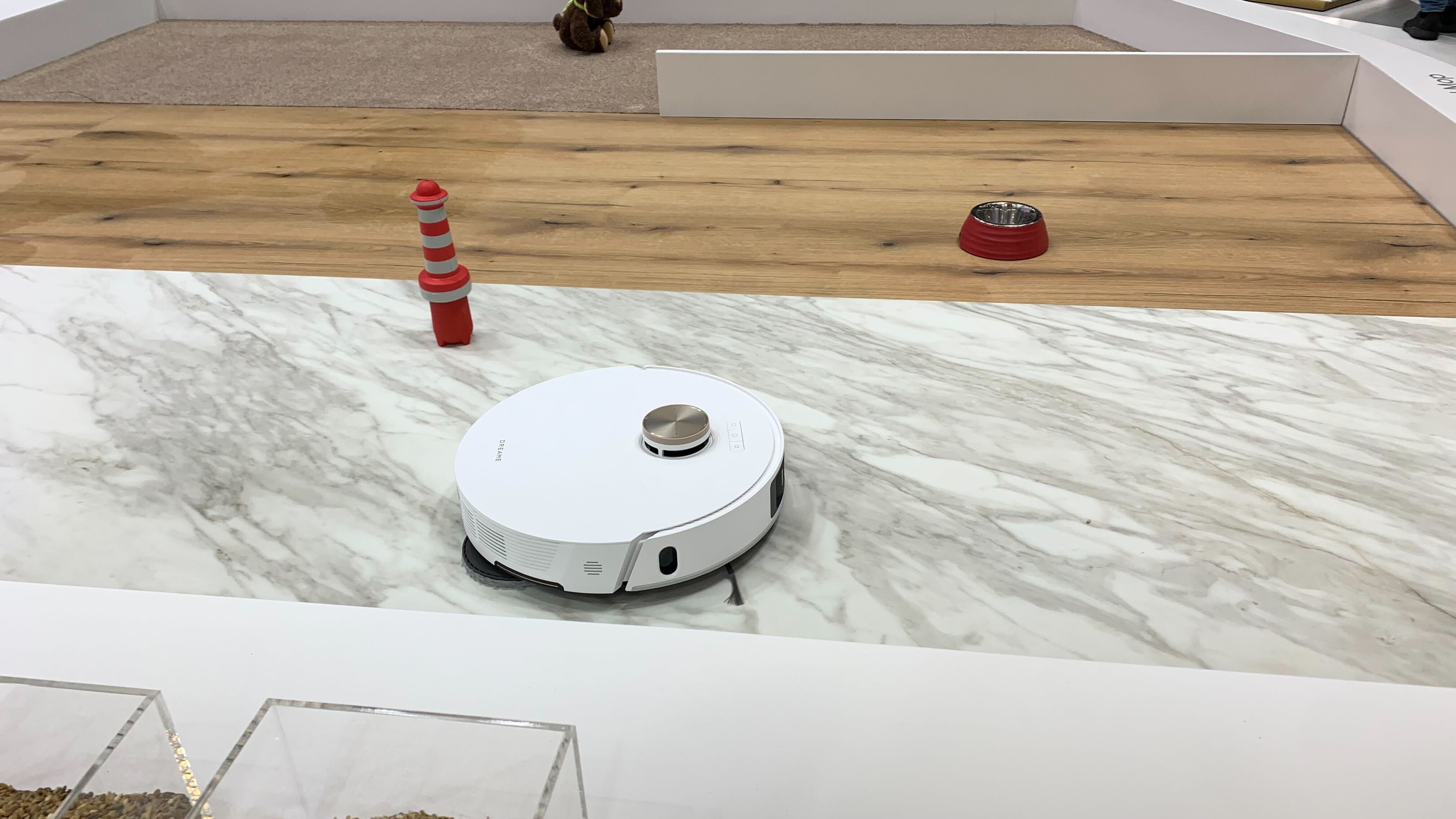
Every year, we’re seeing more and more robot vacuum cleaners hit the market from an increasingly diverse range of manufacturers, and at IFA 2023 was a perfect demonstration of how the market is growing.
However, there’s one pretty crucial area where the industry isn’t diversifying; the vacuums themselves.
Now, I’m impartial to some of the best robot vacuums; I’ve been using the iRobot Roomba Combo j7+ for almost a year and it’s been a real game-changer, helping me keep on top of my floorcare in my busy schedule, and reducing the impact of dust in my home.
Yet as I strolled the sprawling halls of IFA 2023, checking out stands from established brands like Ecovacs, Roborock, and EZVIZ as well as newer robovac manufacturers like Narwhal and SwitchBot, quite frankly I found myself rather bored.
Whether it's because many robot vacuums look exactly the same, bases are getting bigger and bigger, and fundamentally many of them only seem incredibly capable when whizzing around a pre-conceived and well-designed rectangular testing space at shows, I'm just not that impressed by this upcoming year's plucky suckers.
Oh, oh, you think you're something special
Now don't get me wrong; there were some neat-looking vacuums, especially if you're looking to upgrade from an older, less powerful, or intelligent vacuum, or if you're a first-timer. There are even some iterative upgrades that stand to make a pretty big difference with how we use our robovacs.
So, let’s start with a rundown of the key players and what they were displaying at IFA.
Get daily insight, inspiration and deals in your inbox
Sign up for breaking news, reviews, opinion, top tech deals, and more.
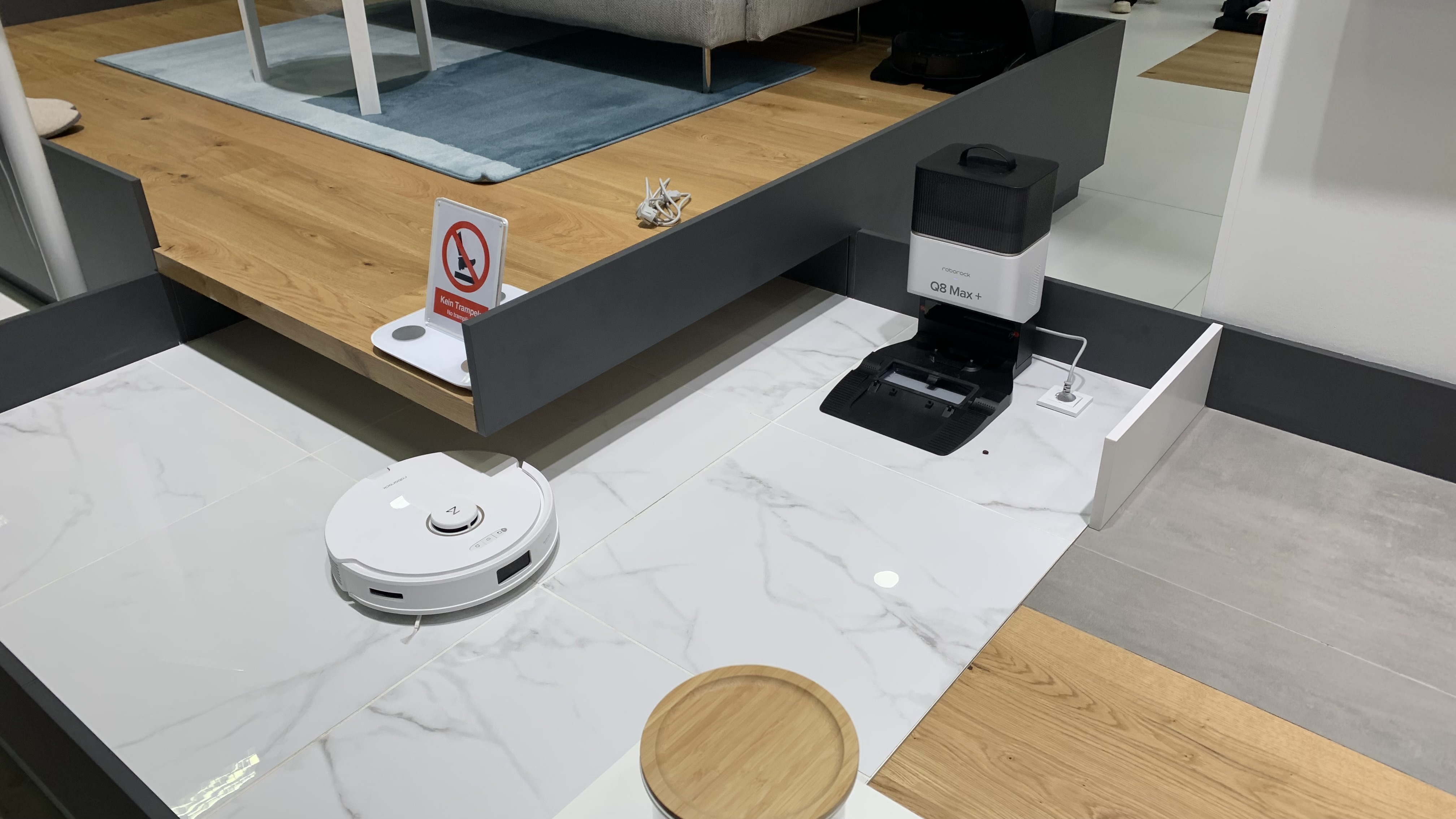
Roborock
First on my list was Roborock, which presented two new robot vacuums; the Q5 Pro (which adds mopping and larger dustbin capacity to the existing standard Roborock Q5) and the Q8 Max, as well as "Plus" versions which include auto-emptying docks.
Both models feature LiDAR technology and have a significant power boost compared to previous models in Roborock's mid-range and affordable Q line, as well as better in-app features like intelligent no-go zone suggestions and fast-cleaning modes.
These also include Roborock's new DuoRoller brush system, introduced earlier this year in the S8 series, which sees two diverging rubber brushes designed for a more efficient clean.
Additionally, the Q8 Max adds other features historically seen only in Roborock's more premium vacuums; namely, the Reactive Tech Obstacle Avoidance system to improve navigation.
Both of these vacuums are just 'fine', in my slightly-snobby robot vacuum user opinion. I don't see either offering a fully comprehensive deep clean of your home, but I can appreciate the much more manageable price tag.
- Price: The Q5 Pro will be $429.99 or $699.99 for the auto-emptying Q5 Pro Plus. The Q8 Max will be $599.99 or $819.99 for the Plus version. UK pricing TBC.
- Release date: TBA, likely October
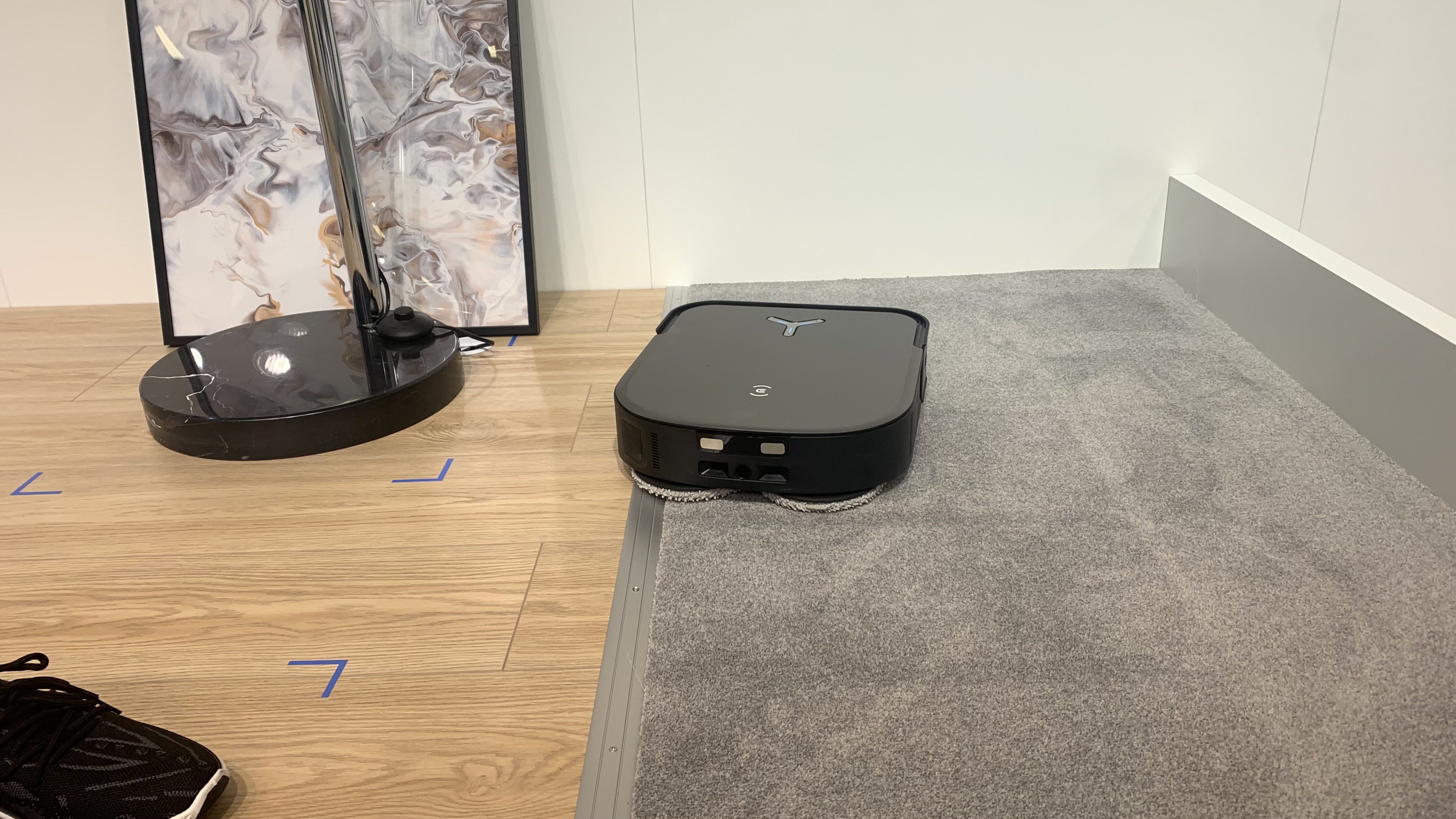
Ecovacs
Next up was Ecovacs, creator of the Ecovacs Deebot Ozmo N8+, which, as of writing, is among our favorites from recent years. At IFA, Ecovacs showed off the the Deebot X2 Omni, which is an upgraded version of its flagship robovac, the X1 Omni.
The big unique selling point here is that it’s now square, making it better for corner cleaning, and the team claims it has finally nailed down the navigation challenges typically associated with this form factor in the latest model.
Outside of its different shape, Ecovacs has also moved to a side-mounted dual-laser LiDAR navigation technology, doing away with the top-mounted laser and thus giving the vacuum a lower clearing height for cleaning underneath furniture. Additionally, the AI obstacle detection and suction power have been improved, the mop can lift 15mm to reduce water transfer onto carpets, and the dock itself has also been given a more pared-back look.
I can't help but be cynical of the claims made by Ecovacs regarding solving square robovac navigation issues, but I could well eat my hat upon testing. Plus, the low clearing height of the retractible mop pads has me a little unconvinced.
- Price: TBC, available in the UK and US.
- Release date: TBC
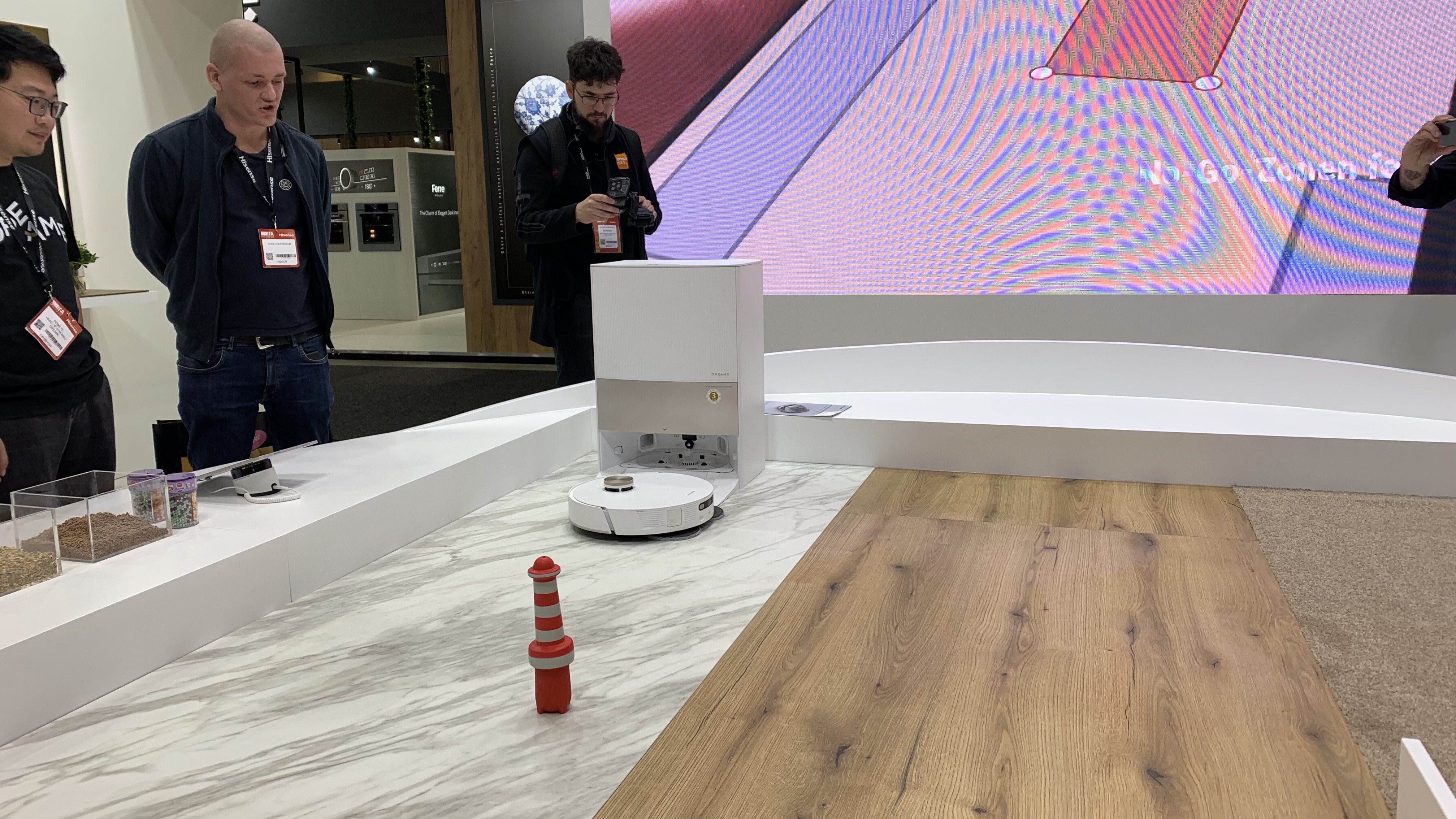
Dreame
Dreame also had exciting flagship news, announcing the release of the DreameBot L20 Ultra, which, credit where it's due, does have a pretty innovative new feature: the ability to remove its own mop pads to keep carpets dry.
If you prefer, you can also use the Dreame app to instruct the vacuum to instead raise its mop pads, or avoid carpets altogether.
Now, I personally prefer how my iRobot Roomba navigates this challenge, lifting the mop pad from its lid down to the ground when on hard floors, but Dreame's solution means you don't have to sacrifice the power and thoroughness of rotating mop pads.
Plus, the L20 also can extend its mops to the walls to ensure a comprehensive clean, which is probably the best robovac mopping mechanic I've seen so far. Otherwise, the L20 offers improved suction power, as well as better mapping and obstacle avoidance. Much like the SwitchBot S10 vacuum I saw this week, you can also opt to purchase a plumbing kit to allow for automatic water tank drainage and refills.
However, there are two major drawbacks; the base is absolutely enormous, and with the base being so huge, I can't see the new plumbing kit being much of a boon for many users.
- Price: $1499.99 / £1199
- Release date: September 1st
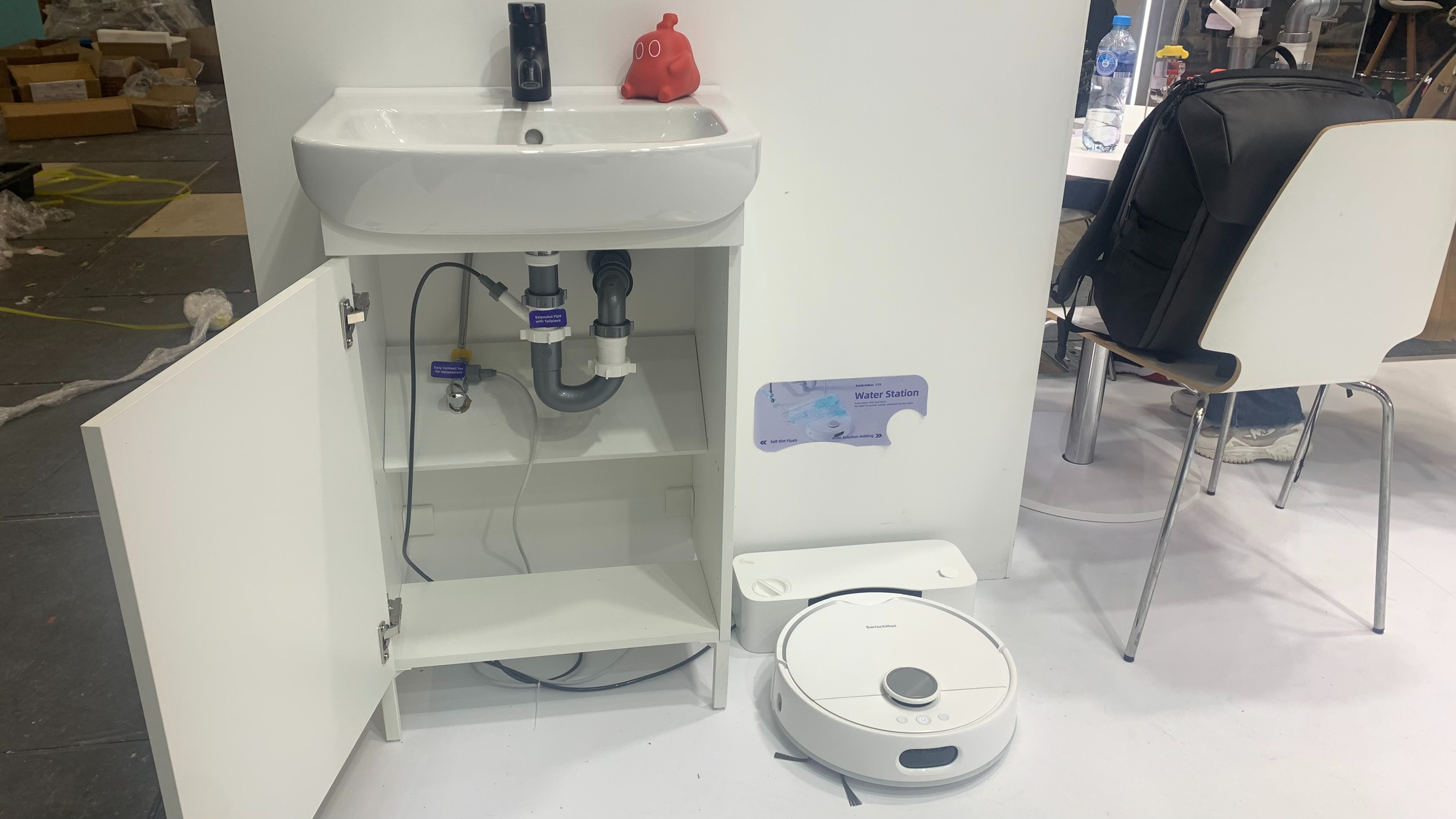
The best of the rest
While the aforementioned brands were the main players exhibiting at the show, a few smaller brands made themselves known.
I've mentioned SwitchBot a few times already, largely because it was such a surprise to see it enter a more complex robotics space with its first robot vacuums. These new floorcare products are the S10 (pricing and availability TBC) and the adorably teeny K10 Plus (US-only at $499, available in November. UK pricing and availability TBC as of writing). The S10 offers a fully hands-free vacuum and mop around your home thanks to its plumbed-in water station which automatically drains and refills the bot's water tank; plus, SwitchBot will be selling its Humidifier 2 in tandem, which the bot can refill in between cleaning jobs.
Much like the brand's flagship product, the SwitchBot Bot, the K10 robot vacuum has stolen my heart, with its itsy-bitsy 3.6 x 9.8-inch / 9.1 x 24.9cm (h x d) frame being perfect for smaller homes with lots of little nooks and crannies to clean. However, both vacuums didn't exactly "wow" me with the actual vacuuming or mopping hardware, opting for more budget-friendly components that I don't expect to offer the most comprehensive cleaning.
Narwhal was also in attendance showing off its Freo robovac, which launched earlier this year in China and is now making its way to the US ($1,598.99) and some European countries. There's no word on UK pricing and availability as of yet. The Narwhal Freo has some familiar features such as like dirt-sensing technology and advanced edge mopping, but Narwhal's big unique selling point is its automatic water exchange system, which automatically drains dirty water from mop pads and refills them with clean water… I'm beginning to sense a theme here.
Yeedi also took the opportunity to announce the Yeedi Cube, its first auto-emptying robot vacuum, and mop that can wash, dry and refill the mop. It launches on September 5 at a very affordable price of $699 (UK price and availability TBC). Both the device and dock are pretty compact, but the bot can still lift its mop by 8mm when traveling over carpets and adjust the mop pad angle by 8 degrees to account for uneven surfaces.
Don't get me wrong, yeah I think you're alright
What we're really seeing here is an unfortunate consequence of popularity and market dominance; a stifling of innovation.
To my eyes, the problem is that there are more vacuums available than there are people actually interested in buying them, generally speaking, and that’s especially true in markets where people typically live in multi-storey homes. The market moves incredibly quickly, and I'm willing to bet that's a big part of why more people aren't investing in these pricey devices in the knowledge a better upgrade will be available in six or 12 months.
That's not to say there weren't exciting developments on display at IFA; SwitchBot and Dreame's head-to-head over plumbing-connected robot vacuums is exciting, as is SwitchBot's micro-robovac and Ecovacs' supposed fix for square-bot navigation.
I just think that robot vacuum manufacturers could do with chilling out for a year or two, and working to solve some of the bigger issues facing the devices; chiefly, high prices, middling results, and the perennial enemy of all robots: stairs.
You might also like

Josephine Watson (@JosieWatson) is TechRadar's Managing Editor - Lifestyle. Josephine is an award-winning journalist (PPA 30 under 30 2024), having previously written on a variety of topics, from pop culture to gaming and even the energy industry, joining TechRadar to support general site management. She is a smart home nerd, champion of TechRadar's sustainability efforts as well and an advocate for internet safety and education. She has used her position to fight for progressive approaches towards diversity and inclusion, mental health, and neurodiversity in corporate settings. Generally, you'll find her fiddling with her smart home setup, watching Disney movies, playing on her Switch, or rewatching the extended edition of Lord of the Rings... again.